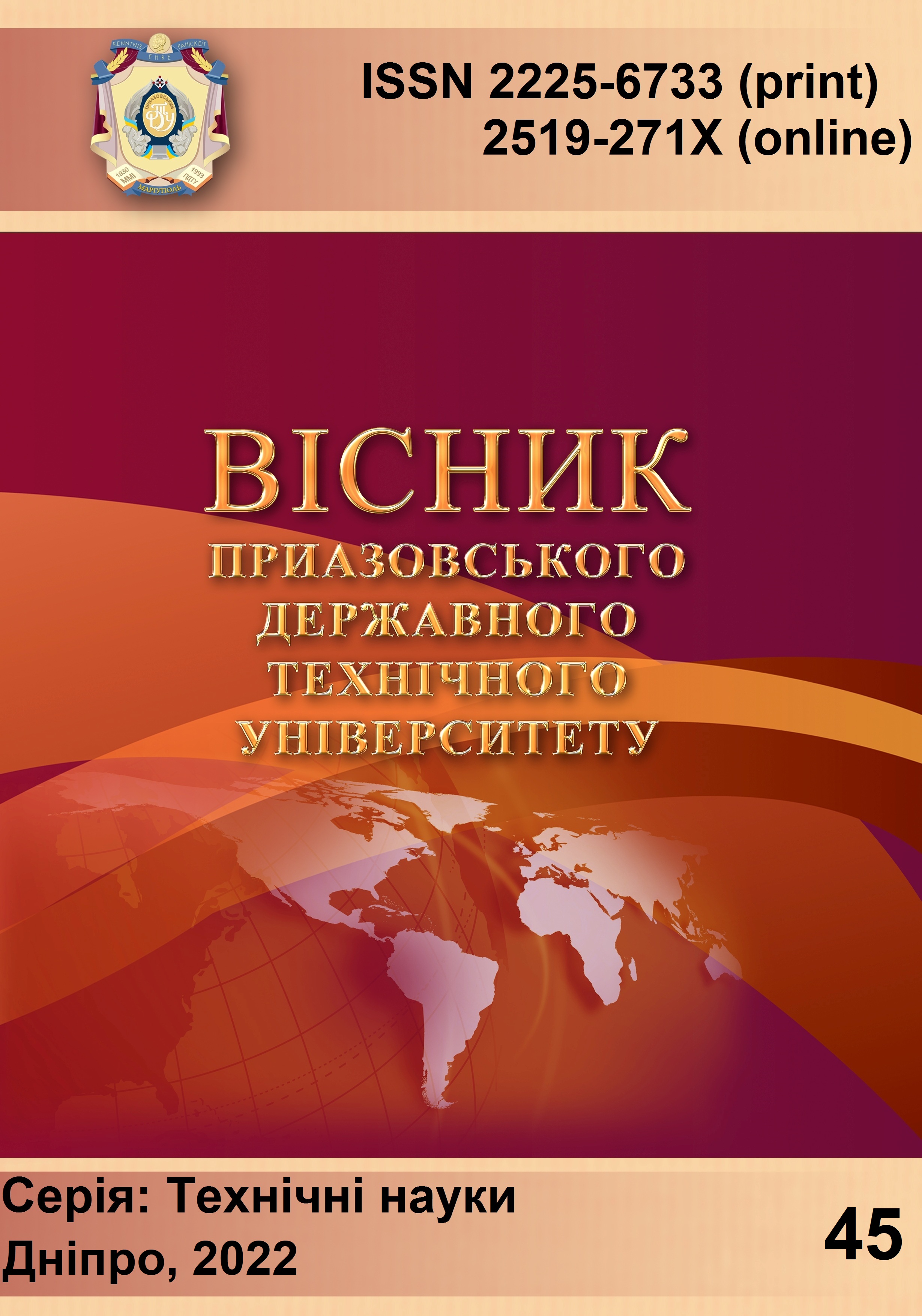Hybrid VAR compensator operating study under conditions of a three-wire network
DOI:
https://doi.org/10.31498/2225-6733.45.2022.276239Keywords:
active power filter, power quality, total harmonic distortion, higher harmonics, compensation, reactive power, autonomous voltage inverter, capacitor bankAbstract
The approaches to the control of the hybrid VAR compensator are considered. A hybrid VAR compensator is a passive and active compensator connected in series. The passive part is represented by a thyristor-switched capacitor bank. The power part of the active part is implemented on the basis of an autonomous voltage inverter, connected through a voltage transformer in series with a passive part. Most of the reactive power is compensated by means of the compensator’s passive part. The hybrid compensator combines the advantages of passive (low price, reliability) and active compensators (possibility of smooth control of reactive power, operation in networks with non-sinusoidal currents). This configuration allows to significantly reduce the rated power of the active part, while maintaining the possibility of smooth control of the reactive power. Mathematical modeling of the hybrid system operation in a three-wire network is carried out. Two operating modes are checked: the reactive power compensation mode and the mode of providing the sinusoidal waveform of the network current. The first mode provides fundamental reactive power compensation only (the compensator current is sinusoidal, therefore, provides «insulation» of capacitor bank from higher harmonics) and the second mode provides limitedly non-active power compensation, including distortion power (overvoltages and exceeding the permissible currents of the capacitor bank are not allowed). When choosing a control strategy, the network configuration and the real requirements of power consumers for power quality indicators are taken into account. The efficiency of the proposed model under conditions of non-sinusoidal load current and unbalance of the main’s voltage is provided
References
Characteristics of modern nonlinear loads and their influence on systems with distributed generation / D. Shmilovitz, J. Duan, D. Czarkowski, Z. Zabar, S. Lee // International Journal of Energy Technology and Policy. – 2007. – Vol. 5, iss. 2. – Pp. 219-240. – Mode of access: https://doi.org/10.1504/IJETP.2007.013033.
Cavallini A. Probabilistic investigation of the life behavior of power capacitors operating under distorted supply voltage / A. Cavallini, G. Mazzanti, G.C. Montanari // Lifetime Data Analysis. – 1997. – Vol. 3. – Pp. 47-61. – Mode of access: https://doi.org/10.1023/a:1009616218251.
Поднебенная С.К. Повышение энергоэффективности электротехнического комплекса «нелинейная нагрузка – силовой активный фильтр» в электрических сетях 0,4 кВ : дис. … канд. техн. наук : 05.09.03 / Поднебенная Светлана Константиновна. – Донецк, 2013. – 199 с.
Adaptive Notch Filter Applied to Hybrid Active Var Compensator under Nonsinusoidal and Unbalanced Conditions / S.C. Ferreira, R.B. Gonzatti, C.H. Silva, L.E.B. Silva, G. Lambert-Torres // 2013 IEEE Energy Conversion Congress and Exposition. – 2013. – Pp. 2264-2269. – Mode of access: https://doi.org/10.1109/ECCE.2013.6646989.
A Hybrid Active Var Compensator (HAVarC) / C.H. da Silva, R.R. Pereira, L.E. Borges da Silva, G.L. Torres, R.B. Gonzatti // Proceedings of 14th International Conference on Harmonics and Quality of Power – ICHQP 2010. – 2010. – Pp. 1-5. – Mode of access: https://doi.org/10.1109/ICHQP.2010.5625341.
Herman L. Hybrid Active Filter for Power Factor Correction and Harmonics Elimination in Industrial Networks / L. Herman, I. Papič // 2011 IEEE Electrical Power and Energy Conference. – 2011. – Pp. 302-308. – Mode of access: https://doi.org/10.1109/EPEC.2011.6070216.
Control strategies applied to an hybrid reactive power compensator to single and three phase systems / S.C. Ferreira, R.B. Gonzatti, C.H. da Silva, L.E. B. da Silva, G.L. Torres // Brazilian Power Electronics Conference. – 2013. – Pp. 1219-1225. – Mode of access: https://doi.org/10.1109/COBEP.2013.6785271.
Balci M.E. A power resolution for nonsinusoidal and unbalanced systems – Part I: Literature overview and motivation / M.E. Balci, M.H. Hocaoglu // 7th International Conference on Electrical and Electronics Engineering (ELECO). – 2011. – Pp. 168-173.
IEEE Std 1459-2010. IEEE Standard Definitions for the Measurement of Electric Power Quantities Under Sinusoidal, Nonsinusoidal, Balanced, or Unbalanced Conditions. – 2010. – 40 p.
Гибридный компенсатор реактивной мощности с плавным регулированием / В.В. Бурлака, С.В. Гулаков, С.К. Поднебенная, О.С. Савенко // Електротехніка та електроенергетика. – Запоріжжя, 2014. – Вип. 2. – С. 13-19.
Downloads
Published
How to Cite
Issue
Section
License
The journal «Reporter of the Priazovskyi State Technical University. Section: Technical sciences» is published under the CC BY license (Attribution License).
This license allows for the distribution, editing, modification, and use of the work as a basis for derivative works, even for commercial purposes, provided that proper attribution is given. It is the most flexible of all available licenses and is recommended for maximum dissemination and use of non-restricted materials.
Authors who publish in this journal agree to the following terms:
1. Authors retain the copyright of their work and grant the journal the right of first publication under the terms of the Creative Commons Attribution License (CC BY). This license allows others to freely distribute the published work, provided that proper attribution is given to the original authors and the first publication of the work in this journal is acknowledged.
2. Authors are allowed to enter into separate, additional agreements for non-exclusive distribution of the work in the same form as published in this journal (e.g., depositing it in an institutional repository or including it in a monograph), provided that a reference to the first publication in this journal is maintained.









